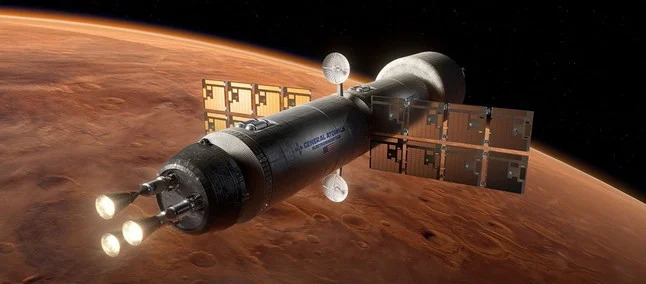The New Nuclear Fuel That Makes Mars Travel Possible in Just 45 Days
General Atomics Electromagnetic Systems (GA-EMS) has recently achieved a groundbreaking milestone that could radically change the landscape of space exploration. The company has successfully tested a nuclear fuel capable of withstanding extreme temperatures of 4,220°F (2,326°C), simulating the conditions of a nuclear thermal propulsion reactor. This advancement could reduce the travel time to Mars to just 45 days, opening up new possibilities for interplanetary missions.
Why Is Nuclear Propulsion Crucial for the Future of Space Missions?
Currently, rockets primarily use chemical propulsion or, in some cases, ion propulsion. However, these methods have clear limitations: chemical propulsion is only suitable for short distances, while ion propulsion is more efficient but not powerful enough to carry heavy payloads or reach high speeds in a short time. With current systems, a trip to Mars takes about six to seven months. However, nuclear thermal propulsion (NTP) offers a much more efficient solution, capable of drastically reducing travel times, as evidenced by successful tests conducted at NASA's Marshall Space Flight Center.
During the tests, GA-EMS's fuel was exposed for 20 minutes to extreme temperatures, similar to those of an operating nuclear engine, without showing significant degradation. This is a crucial step in developing reliable nuclear rockets for long-duration missions. If you'd like to learn more about how a space rocket works, we encourage you to read our dedicated article on the topic.
How Does Nuclear Thermal Propulsion Work?
Nuclear thermal propulsion is a technology first theorized in the 1940s but is now nearing practical implementation. NTP uses a nuclear reactor to heat a propellant (typically hydrogen), turning it into high-temperature gas that generates the thrust needed for the rocket. This method offers significant advantages over chemical propulsion:
- Superior efficiency: More thrust per unit of fuel.
- Higher speeds: Allows for faster interplanetary travel.
- Heavier payloads: Ideal for human missions and transporting heavy materials.
The importance of this development is not just speed—it also improves safety. Nuclear propulsion could reduce astronaut risks by cutting down on exposure to cosmic radiation during space missions.
An Interplanetary Future Within Reach
It’s not just GA-EMS working on this promising technology. NASA and DARPA recently awarded a contract to Lockheed Martin to develop the DRACO rocket (Demonstration Rocket for Agile Cislunar Operations), which could send a vehicle to Mars in just 45 days. The first tests could occur as soon as late 2025 or early 2026.
With the success of the nuclear fuel tests, nuclear thermal propulsion could truly mark the beginning of a new era for space exploration. Faster trips to Mars, missions beyond the solar system, and the possibility of establishing space colonies could become achievable goals in the near future.
Conclusion
The innovation of nuclear thermal propulsion not only accelerates travel times in space but also improves the safety of space missions. With new technologies capable of withstanding extreme conditions, the possibilities for the future of space exploration are more promising than ever.
For more details on nuclear fuel and its impact on interplanetary travel feasibility, we invite you to follow future developments in this groundbreaking technology.








Leave a Comment